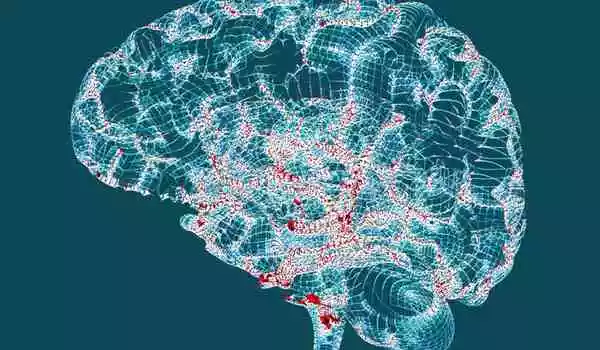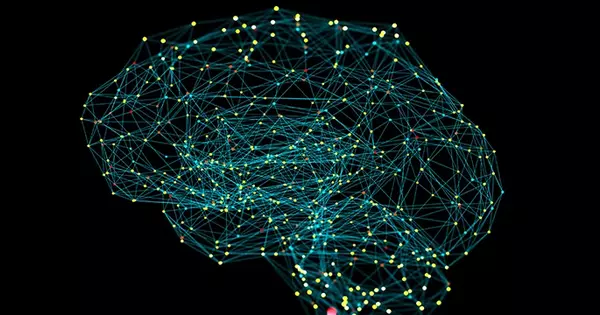A device that looks like a Wi-Fi router employs a neural network to detect the presence and severity of one of the world’s fastest-growing neurological diseases. Parkinson’s disease is notoriously difficult to diagnose because it is primarily based on the appearance of motor symptoms such as tremors, stiffness, and slowness, which often appear several years after the disease has begun.
Dina Katabi, the Thuan (1990) and Nicole Pham Professor in the Department of Electrical Engineering and Computer Science (EECS) at MIT and principal investigator at the MIT Jameel Clinic, and her colleagues have developed an artificial intelligence model that can detect Parkinson’s disease simply by reading a person’s breathing patterns.
The tool in question is a neural network, which is a collection of linked algorithms that mimic the way the human brain works and can detect Parkinson’s disease based on nocturnal breathing patterns – that is, breathing patterns that occur while sleeping. The neural network, developed by MIT Ph.D. student Yuzhe Yang and postdoc Yuan Yuan, can also determine the severity of someone’s Parkinson’s disease and track its progression over time.
Some medical studies have shown that respiratory symptoms appear years before motor symptoms, suggesting that breathing characteristics may be promising for risk assessment prior to Parkinson’s diagnosis.
Dr. Katabi
Yang is the lead author on a new paper describing the research, which was published today in Nature Medicine. The senior author is Katabi, who is also an affiliate of the MIT Computer Science and Artificial Intelligence Laboratory and the director of the Center for Wireless Networks and Mobile Computing. They are joined by Yuan and 12 colleagues from Rutgers University, the University of Rochester Medical Center, the Mayo Clinic, Massachusetts General Hospital, and the Boston University College of Health and Rehabilition.
Over the years, researchers have investigated the potential of detecting Parkinson’s using cerebrospinal fluid and neuroimaging, but such methods are invasive, costly, and require access to specialized medical centers, making them unsuitable for frequent testing that could otherwise provide early diagnosis or continuous tracking of disease progression.
The MIT researchers demonstrated that an artificial intelligence assessment of Parkinson’s disease can be performed at home every night while the person is sleeping and without touching their body. To accomplish this, the team created a device that resembles a home Wi-Fi router, but instead of providing internet access, it emits radio signals, analyzes their reflections off the surrounding environment, and extracts the subject’s breathing patterns without any bodily contact. The breathing signal is then fed into the neural network to assess Parkinson’s disease passively, with no effort required from the patient or caregiver.

“Dr. James Parkinson’s work in 1817 discovered a link between Parkinson’s disease and breathing. This prompted us to consider the possibility of detecting disease through one’s breathing rather than movement” Katabi states. “Some medical studies have shown that respiratory symptoms appear years before motor symptoms, suggesting that breathing characteristics may be promising for risk assessment prior to Parkinson’s diagnosis.”
Parkinson’s disease is the world’s fastest-growing neurological disease, and it is the second-most common neurological disorder after Alzheimer’s disease. It affects over 1 million people in the United States alone, with an annual economic burden of $51.9 billion. The algorithm developed by the research team was tested on 7,687 people, including 757 Parkinson’s patients.
The study, according to Katabi, has important implications for Parkinson’s drug development and clinical care. “In terms of drug development, the findings may allow for clinical trials with significantly shorter durations and fewer participants, thereby speeding up the development of new therapies. In terms of clinical care, the approach can aid in the evaluation of Parkinson’s patients in traditionally underserved communities, such as those living in rural areas and those who have difficulty leaving their homes due to limited mobility or cognitive impairment “she claims
“There have been no therapeutic breakthroughs this century, implying that our current approaches to evaluating new treatments are suboptimal,” says Ray Dorsey, a University of Rochester professor of neurology and Parkinson’s specialist who co-authored the paper. Dorsey adds that the study is likely one of the largest sleep studies ever conducted on Parkinson’s.
















